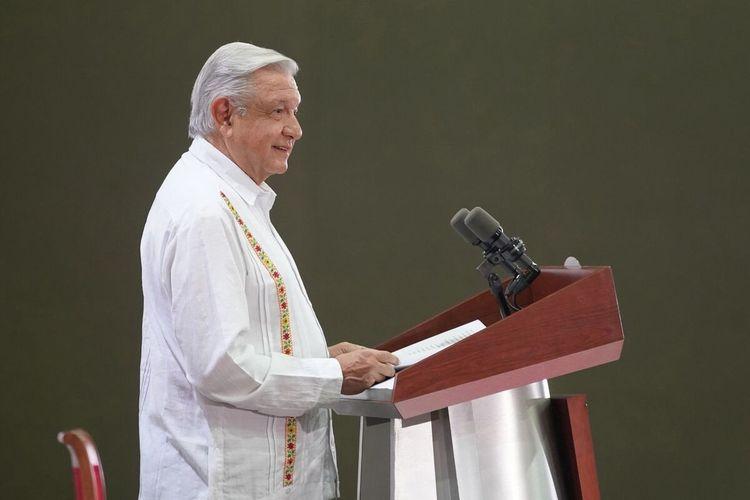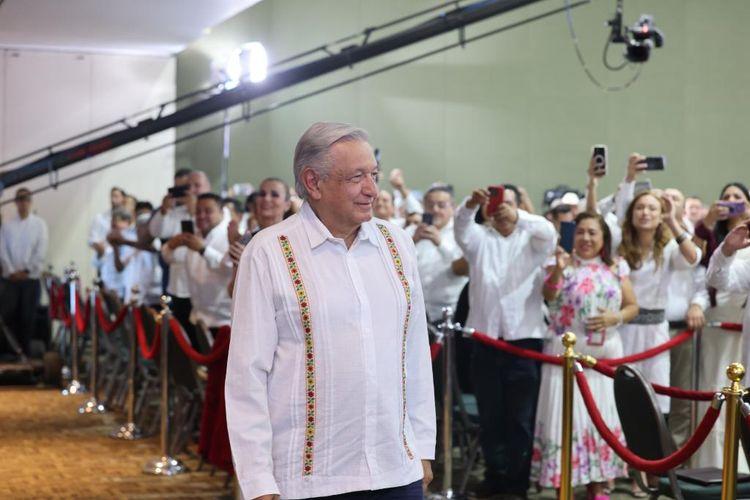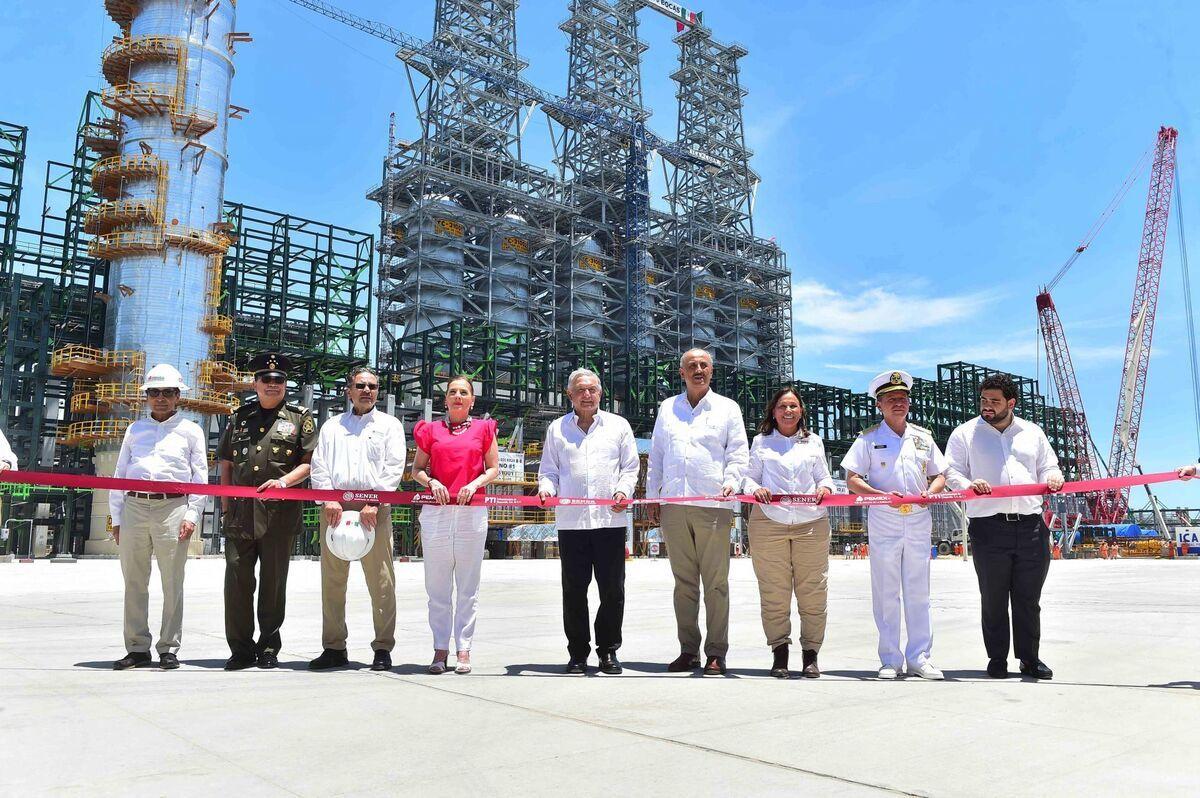In his fifth government report, President Andrés Manuel López Obrador said “we care for the environment like never before”, highlighting actions such as the prohibition of fracking, the end of new mining concessions and the creation of Protected Natural Areas.
However, in the same speech, he also emphasized that one of his government's priorities is the production of hydrocarbons at the national level, through projects such as the construction of the Dos Bocas refinery, the purchase of the Deer Park refinery in Texas, and investment in coking plants in Tula, Hidalgo, and Salina Cruz, Oaxaca, where thermoelectric power plants already exist.
“There really is a certain contradiction (in the discourse). Refining more in the country makes sense from the point of view of energy sovereignty, of energy security, because we depend too much on the United States. But on the other hand, refineries are the ones that pollute the most, along with thermoelectric plants, so there is no positive balance in this regard,” explains Luca Ferrari, a researcher at the Geosciences Center of the National Autonomous University of Mexico (UNAM).
In addition to this contradiction, the fifth presidential report presented a series of misleading data regarding hydrocarbon production, fuel costs and environmental protection that have been analyzed by Causa Natura Media for this publication.

Presentation of the fifth government report. Photo: Government of Mexico.
The costs of gasoline and electricity
During the presentation of the fifth report in Campeche, President López Obrador said that the objective of increasing hydrocarbon production is energy sovereignty so that all crude oil is processed in Mexico.
“Keep prices low for the benefit of consumers as we have done because the price of diesel, gasoline or electricity has not increased, nor have taxes increased or new taxes have been created,” he said.
But this statement is misleading.
According to the price history recorded by the Energy Regulatory Commission (CRE), while in December 2018, at the beginning of the six-year term, the average gasoline cost 19.10 pesos, by December 2022 it rose to 21.50 pesos. And this year, in states such as Nuevo León or Quintana Roo, it has exceeded 23 pesos.
While in the case of diesel, in December 2018 the national cost was 20.66 pesos and for this year it has remained around 23.70 pesos.
For its part, the Federal Electricity Commission (CFE) rate does not exceed inflation, but there has been an increase in electricity bills. In December 2018, the basic electricity consumption for tariff 1 was 0.793 pesos for each of the first 75 kilowatt-hours (kWh), the cost for the next 65 kWh was paid in 0.956 pesos each and in 2,802 pesos for each additional kWh.
In August 2023, this same rate was 0.987 for the first 75 kWh; 1.203 each of the following 65 kWh, and 3.518 pesos for each additional kWh.
This means that if a household that uses 289 kWh per month in December 2018 paid 539.11 pesos, by August of this year it would be paying 676.40 pesos for the same electricity consumption.

Fifth government report in Campeche. Photo: Government of Mexico.
Gasoline only for Mexico
Another point highlighted in the fifth AMLO report on the production of hydrocarbons was that imports have decreased with a view to the fact that gasoline or diesel will no longer be purchased the following year.
“In 2018, we imported 900,000 barrels a day on average, which meant 80% of national consumption when we came to the government. By the end of this year we will be importing only 250,000 barrels, which represents 20% of national consumption. The plan is that next year we will not buy gasoline or diesel from abroad and that all the crude oil will be processed here to give added value to our raw material,” said López Obrador.
According to the most recent Mexican Merchandise Trade Balance reports from the National Institute of Geography and Statistics (Inegi), oil imports have fallen by around 40 to 50 percent in recent months. However, the decline began to take place recently, since in previous years they were on the rise.
Regarding the fact that gasoline or diesel will no longer be purchased next year, researcher Luca Ferrari believes that it is not feasible. As co-coordinator of CONACYT's National Strategic Energy and Climate Change Program, he has addressed the issue of energy production to understand the operation of refineries.
“The Dos Bocas refinery is going to produce about 20 percent of the refining needs it has in Mexico on the day it works and the other refineries we have are operating around 50 percent of what they can, we would have to raise them to 80 percent, but it's going to be very difficult. And even then it's not enough,” says Ferrari.
For the researcher, the capacities to refine oil are needed and, even if they did, they would not be enough to supply the fuel market. In addition to the fact that, just as imports have fallen, so have exports and production.

Inauguration of the first construction phase of the Olmeca Dos Bocas Refinery. Photo: Government of Mexico
Fracking
One of the actions in favor of the environment highlighted by AMLO in its fifth report was that energy exploitation through fracking has not been allowed.
But this statement can be misleading. Fracking or hydraulic billing, which is a technique to facilitate the extraction of gas or oil, has not been carried out in unconventional wells, but it has been done in a traditional way.
“It is true that no allocations have been made to exploit new unconventional blocks with fracking. But on the other hand, fracking has continued to be done by Pemex in vertical wells, as it has been done since previous six years,” explains researcher Ferrari.
There are even organizations and specialists that make up the Mexican Alliance against Fracking that have documented these practices, their impacts on the environment and the curb of legislation that prohibits this practice beyond discourse.
*This content was produced with the support of the Institute for War And Peace Reporting and mentoring from Animal Político, within the framework of the Mexican Journalism Resiliency program.



Comentarios (0)